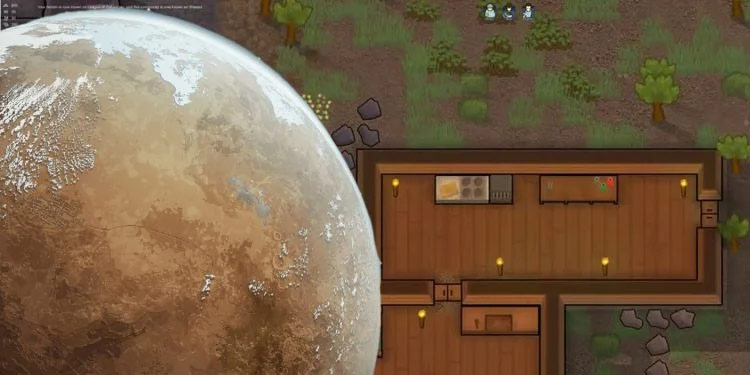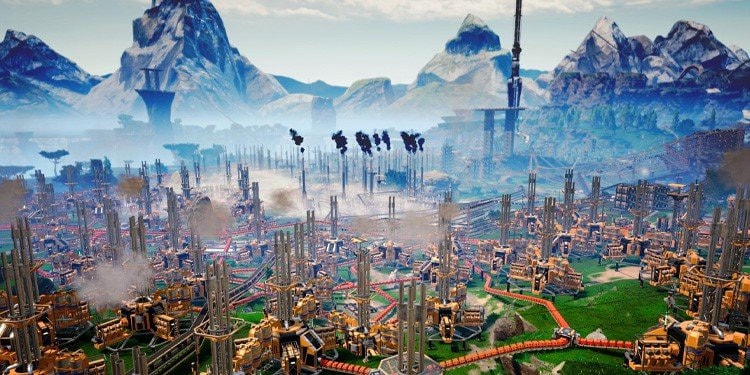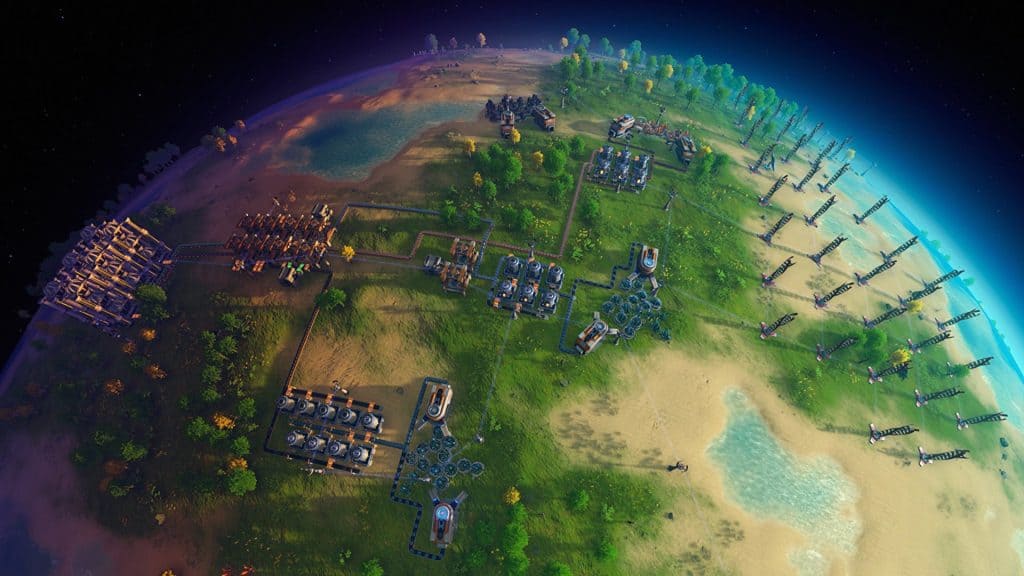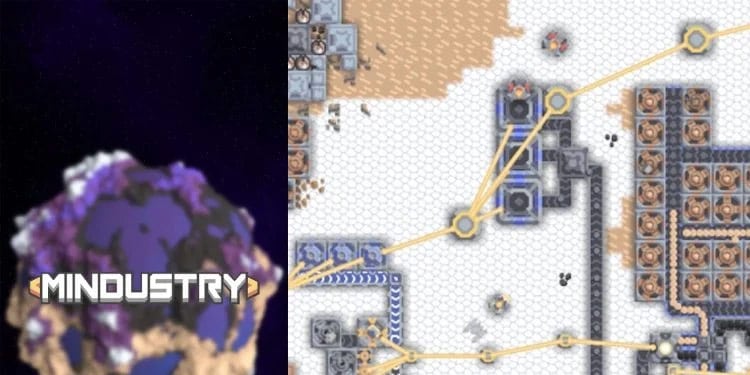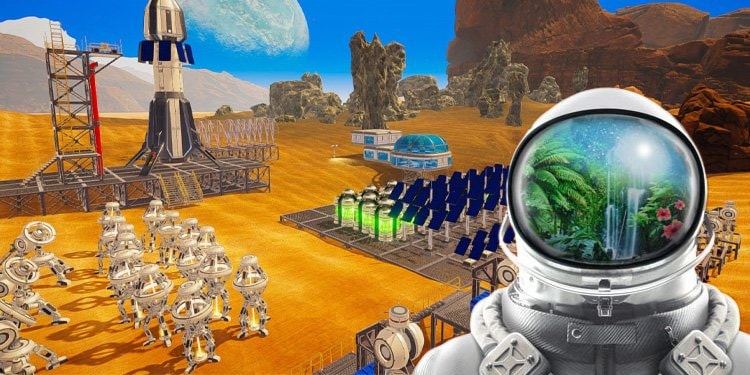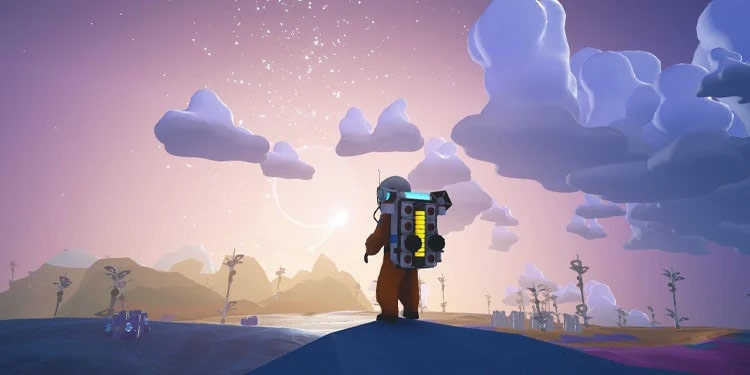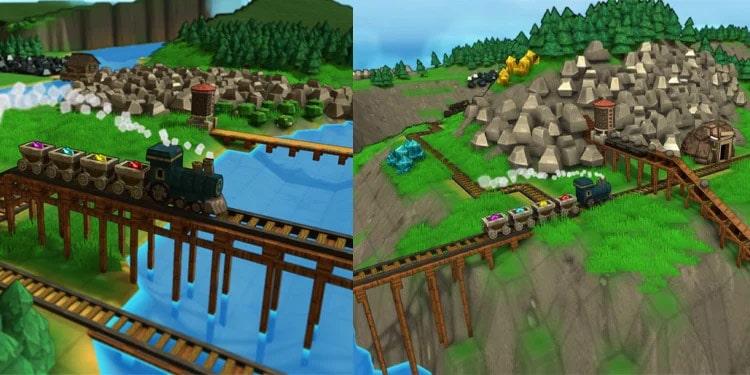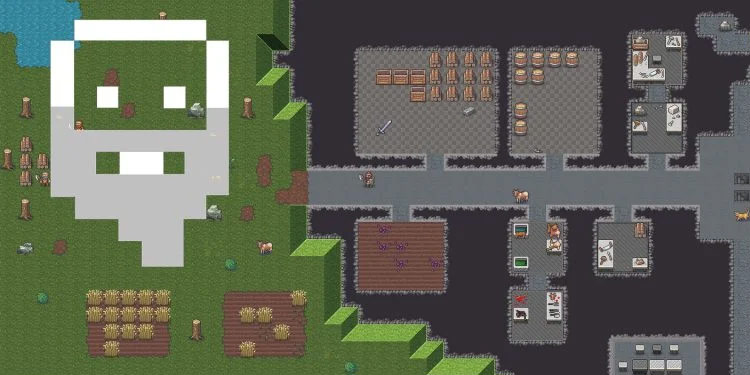The title debuted after a successful 2013’s Indiegogo crowdfunding campaign. In 2020, after four years of early access, it became a fully-fledged product for Linux, SteamOS, macOS, and Windows. The title has a thriving community with over 10K daily concurrent fans on Steam. If you have been one of these players, you’re probably looking for construction sim games like Factorio.
Selecting Games Like Factorio
We believe Factorio fans would like games featuring a mix or a twist of its gameplay and mechanics:
Genre: Factorio is a construction sim sandbox. It also has RTS and survival elements, like pollution and enemy NPCs. Setting: Your role is to manage and build a factory and create automatic systems on an alien planet. The maps are nearly endless. RTS elements: The local wildlife will oppose you. You’d need to build defensive structures and machines to defeat invading enemy hordes.Survival elements: You need to manage supply lines properly and keep enough resources to ensure the factory survives. Visual: You play with a birds-view perspective, and the game’s visuals emote 16-bit-era graphics. Resources: You harvest and transport resources necessary to craft tools and machines.Building: You use the tools and machines to gather more advanced materials, facilities, and technologies.Tech tree: You advance the tech tiers by crafting better and better tools. It gives you access to automated factory systems. Blueprints: Blueprints are building layouts. You create, alter, and customize blueprints at will. Construction: You place a blueprint on the ground, which opens a “ghost” guide. Then, you either manually place each part or let robots do it. Automatic building: Blueprints can be as big as possible, covering entire factories. Over time, you’ll be able to build whole places automatically.Victory condition: You can “win” the campaign by building a rocket. It requires a massive amount of resources and research. Mod support: There’re dozens of mods available on Steam Workshops. You can also create and share your mods and maps with the Map Editor. Game: There’re free DLCs with different scenarios and challenges aside from the game mode. Co-op: Lastly, you can play solo or play online. Up to 65 people can work in a factory, but it greatly depends on your hardware and connection quality.
Overall, the idea is to set up an effective and sizable factory capable of launching a rocket. The task requires exploiting resources, crafting tools, and managing research and construction. Games like Factorio don’t need a victory condition. Rather, we’re leaning towards a similar gameplay loop: gather resources, craft tools, research technology, build structures and grow.
Games Like Factorio
Subnautica
Subnautica is a survival crafting adventure first and a simulator second. See, your character crashes and lands on an alien ocean planet. The goal is returning home, but this requires diving deeper and deeper for resources. Also, as far as construction sim goes, it’s one of the best. For instance, it has a thrilling sandbox campaign where you freely uncover the mystery of the planet. More importantly, it has a caring developer team pushing constant updates. The map is static, open-world, gorgeous, and full of different biomes. You explore lava fields, underwater drives, reefs, sea trenches, etc. You gather materials for tools, use tools to craft bases, and research tech. However, there’s a day and night cycle, and you wouldn’t want to explore at night. The survival element comes because you have to manage oxygen supply and air pressure. This works by building special suits and special bases. Additionally, you have to drink water, eat, and develop the special equipment you need to survive and explore. Lastly, there’re dangerous alien underwater creatures. Needless to say, you play in first-person, so you’ll be using harpoons and lances to fend off monsters, hunt smaller beasts, and build your underwater habitat.
RimWorld
RimWorld is a top-down sci-fi colony construction simulator with an AI storyteller. The storyteller controls random events and variables around you. You can choose between various AIs for a different gameplay experience. Similarly, the maps are procedurally generated. You start the campaign with three random survivors stranded in a distant world. You’ll acquire more colonists by capturing them in battle, so you’ll first have to manage with your three survivors. The gameplay consists of issuing commands to the colonists, like what to build or gather and where to work. The AI will consider several aspects of your colonists’ lives to determine how they act and perform. These aspects include personalities, traits, skills, backgrounds, wounds, hunger, fatigue, mental states, illnesses, addictions, moods, family relationships, etc. Then, you can build and move your sci-fi colony on various biomes. There’re jungles, tundras, deserts, forests, and more. Your option dictates the type of enemy you’ll face, like tribes, pirates, giant insects, or ancient AI machines. Remember, it depends on what the AI storyteller decides. Lastly, there’s also survival. You trade for resources, prepare yourself for harsh weather conditions, and travel in caravans to flee or attack other factions. Taking everything into consideration, RimWorlds is a highly-advanced title, and it’s my personal favorite on the list.
Satisfactory
Satisfactory is a factory construction sim game currently in early access. The twist is how you play in a first-person 3D open-world, rather than a top-down view. It also uses a modern graphical approach, proper for the survival genre. You play as a pioneer on an alien planet. You start with simple tools and a familiar gameplay loop to explore. That is gathering materials, crafting better tools, and creating increasingly complex automatic factory systems. The goal is to build a space elevator to supply a space exploration company with the alien planet’s resources. Reaching there is highly complex and requires grinding your way to the latest states of the tech tree. Because of the perspective, building mechanics are familiar to survival crafting genres. You select the blueprint on your construction menu and place them in an area. The structure builds automatically and consumes the resources it needs. Lastly, there’s exploration and action. You explore the planet on foot or on vehicles to find the resources you need. Then, you can fight against the local wildlife with weapons, traps, and tools you create.
Cities: Skylines
Skylines is perhaps the most popular game on the list, and it’s also the finest city sim builder. Also, despite its age, it has grown in popularity on Steam since 2021, with about 18K daily concurrent players. This is a modern but classic city simulation experience. You have many gameplay elements and mechanics to build, upgrade, manage, expand and maintain a real city from scratch. The simulation has multiple tiers of challenge and management. As the city major, you’ll face elements like balancing water, police, electricity, education, fire fighting, security, health care, taxes, and economy. Meanwhile, your citizens will react to your decisions, making your city grow healthy or become chaotic and desolate. There’s also an AI system that manages an extensive traffic simulation. It greatly influences citizen happiness, trading, work efficiency, and other aspects. Similarly, a day and night cycle affects traffic, citizen schedules, crime, etc. Lastly, there’s an extensive mod catalog to entirely customize, improve, or change maps, structures, and mechanics. You can also create and share your own mods in places like the Steam workshop.
Dyson Sphere Program
Dyson Sphere Program is a factory automation simulation game. It has a sci-fi setting, and the gameplay is about building an industrial complex in space. That said, it’s an Early Access title as well, and a multiplayer feature may debut in upcoming updates. In the distant future, a supercomputer made interstellar travel possible. However, there aren’t enough resources to power the machine. So, you place as a space engineer, and your goal is constructing Dyson Spheres. These are massive structures that orbit around a star to harvest its energy. The universe is an open world, and you build across planets. You play as the engineer with a top-down/third-person hybrid. For instance, you can zoom out the camera to “scroll” the planet as you expand your factory. Speaking of which, the map is procedurally generated, and it’s massive. As a space engineer, you design interstellar factories and automated production lines. It’s all about macro-managing material transport, construction, resource gathering, power networks, and similar systems. You use special tools to manage and design a massive, interstellar automated production line. Your galactic empire starts as a small workshop. Over time, as you gather resources and research tech, you can stretch to the entire galaxy. You can use a spaceship, teleportation, driving, and sailing to explore space and the planets.
Mindustry
Mindustry is a tower-defense game focusing on resource management. It also plays with a top-down perspective, 16-bit graphics, and a giant 2D pixelated factor shooting at monsters. The gameplay revolves around creating increasingly complex supply chains. Your conveyor belts and automated systems will feed ammo to your defensive towers, like turrets, mechs, and ships. Then, other buildings will produce and refine the materials you need to build your defensive structures. You can use many advanced materials as production blocks across your base. Additionally, you can use your materials to research techs and upgrade your structures, belts, and defenses. The enemies will attack in waves. Your defensive structures will act on their own. Still, they depend on how effective your factory produces and transports ammo and supplies (like lubricant and coolant). The main game mode is a campaign. It’s about conquering an alien planet across 16 hand-made maps and 1250+ procedurally generated sectors. Other game modes include PvP, co-op, survival mode, and a sandbox box. Lastly, there’s an editor to create and share your game modes and maps.
The Planet Crafter
Planet Crafter is a survival open-world where terraforming an alien planet is the core gameplay. You’re to transform a hostile world and make it livable for other humans. You play in first-person as well. First, you explore the world on foot or vehicles for resources. Then, you use these resources to craft tools, research tech, and build structures. There’re also survival elements. You have to manage oxygen, heat, and pressure levels. The idea is to reach ideal numbers to make a healthy and friendly biosphere. Buildings either produce heat, oxygen, or atmospheric pressure. As an early access game, the map is still small. Yet, as an offline-only experience, there’s a lot to explore. In particular, you can “geo-engineer” your base all across the planet. Moreover, as you explore, you’ll also need to consider your character’s thirst, oxygen, temperature, and health, tough systems to handle. Lastly, the building mechanics are not as wide as Factorio, and there are no combat, mods, or additional game mods. However, the evolving game premiered very recently, and it’s enjoying a steady fan base with over 6K daily concurrent players on Steam.
Astroneer
Astroneer is a sandbox adventure game with an easy construction sim element. You play the Astroneer, and your job is colonizing an alien planet. There’s no combat, and because it supports up to 4 people in co-op, the experience is relaxing and cool. You play with a third-person perspective. The gameplay loop involves exploring, gathering resources, crafting tools, and building structures. You also have a “terrain tool” to terraform the environment. You also have a rover, teleportation, and a spacecraft to navigate the planet. Another key tool is the Backpack -your inventory and your HUD. It packs a 3D printer, storage slots, quick use slots, and an internal power supply. These tools support almost all in-game mechanics. You’re free to build vertical and horizontal bases across various procedurally generated planets. Yet, you have to manage the key resources you need, like oxygen, fuel, and research. Lastly, you’re also free to explore other planets in randomized solar systems. You’d need to craft spaceships and manufacture fuel from primary resources. Then, you can explore different worlds for resources to exploit.
Raft
Raft is an open-world survival craft with construction sim elements. The setting is an ocean full of islands where you have open-ended adventures. You can play it alone or co-op with up to 8 players. You start the game alone, on a small wooden raft. From a first-person perspective, you’re to gather debris from the ocean with a plastic hook. Then, you use the scrap as resources to develop a multi-store raft where you can live and sail. The gameplay is as usual. That is exploring the ocean and the islands for resources and using these resources to build. Additional systems include keeping the meat fresh, ocean currents, shark attacks, and exploring islands. Then, you also need to manage hunger and thirst. For food, you build nets, hooks, and similar for fishing. For water, you make purifiers to clean the ocean water. There’s also a farming system, as you can gather fruits and seeds on islands to plant on special plots. Lastly, there’s a plot you’ll learn through a two-way radio, notes, and antennas. In particular, you activate antennas on various islands for radio information. This reveals how rising water levels took over the whole world.
Factory Town
Factory Town is an indie title where you manage a 3D factory. You manage its resources, build structures, automate processes, and optimize your systems. The perspective and mechanics are similar to Factorio, so much that many people brand it as a “Factorio clone.” These systems include trains, pipers, airships, tubes, and more. Moreover, managing the resources also includes selling what you produce to nearby NPC villages. Selling goods to the town helps develop the settlements as it expands frontiers. Selling also rewards currency for investing in new technologies. The goal is to build a thriving village in the wild. It requires collecting food, clothing, tools, books, and magical artifacts. You produce these from gathering raw materials like meat, wood, and minerals. There’re also workers to manage. They move goods from production facilities to markets. They also work on your facilities, build, and do everything you need. They are your automated systems. Yet, you can combine them with chutes, railroads, conveyor belts, and similar structures. As for gameplay modes, there’re eight campaign maps with different victory conditions. Alternatively, there’s a map editor, mods, and a free-form sandbox mode. Lastly, there’s a hefty terraforming tool to freely reshape.
Shapez.io
Shapez.io is a 2D game where you build factories to automatically produce geometrical shapes. You create by using these very same shapes. There’s no end goal and no setting, though. If you’re not familiar with Factorio, you probably wouldn’t like it. That’s because it works as a stripped-down version of the 16-bit title. For example, instead of branching resource lines, there’re three mechanics: a painter, a cutter, and a stacker. You learn about these three mechanics in separate tutorials. The rest of the game is painting, stacking, and building and painting a factory by creating blocks. The maps grow bigger and bigger, so these mechanics, albeit simple, are challenging. There’s a lot of variation in the blocks you’ll craft. You must build various shape and color combinations to complete level challenges. Some of the colors, for example, require you to extract colors you have already created to mix with others. Lastly, you use these blocks to craft a factory on increasingly challenging levels. Alternatively, there’s a creative sandbox mode and terrain scripting tools to shape the world as you’d like.
Dwarf Fortress (new Steam version)
Dwarf Fortress is a classic colony-building simulator with RPG and roguelike elements. The original title is a text-based experience, and it’s hard to find. However, it’s releasing soon on Steam with 2D top-down pixelated graphics. But because it’s not currently available, we left it for last. The game offers a procedurally generated world. You control a group of dwarves as you try to construct a sturdy and wealthy fortress. The fortress construction would work as a set of chambers within mountains and caves. Doing so includes a vast number of mechanical layers and mechanics. This is the title that inspired RimWorlds. It has a similar AI that generates the fantasy world and controls all of its mechanics and events. That includes, for example, enemy goblin factions, NPC civilization evolutions, and ecosystems. It’s impossible to convey its depth and complexity. Similarly, the system also models and controls many aspects of the dwarfs. It creates the characters down to their organs and tissues. Then, it includes all kinds of personality traits, combat skills, and backgrounds dictating how they behave in combat and building. Lastly, there’s a secondary roguelike mode, the Adventurer Mode. It’s a turn-based and open-ended experience where you adventure the world freely. In particular, enemies have no hit points; they die when you damage their vital functions and organs.


